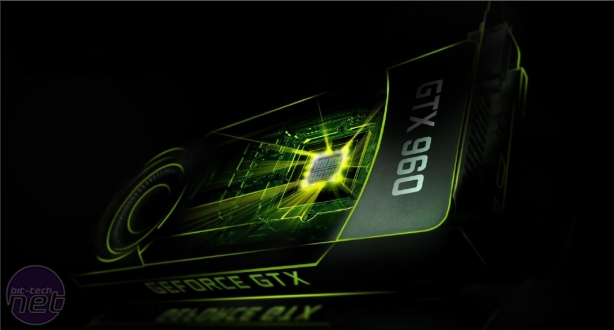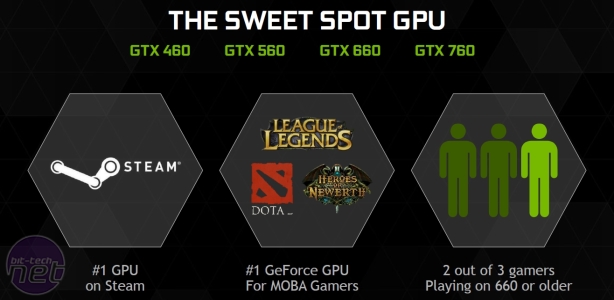Nvidia GeForce GTX 960 2GB Review
Manufacturer: NvidiaUK price (as reviewed): MSRP £159.99 (inc VAT)
US price (as reviewed): MSRP $199.99 (ex Tax)
Almost a year after Nvidia's Maxwell architecture made its début with the GTX 750 and GTX 750 Ti, the mainstream part is here – today, Nvidia launches the GTX 960 2GB. With a starting price of £160 (or $199), Nvidia appears to be continuing its fairly aggressive pricing strategy that began with the GTX 970, and will be replacing its GTX 760 to compete with cards from AMD's Radeon R9 280 series. There are no new or specific games bundles for the GTX 960.
From top to bottom then, Nvidia's current desktop GeForce lineup is: Titan Z (now the only Kepler-based card), GTX 980, GTX 970, GTX 960, GTX 750 Ti and GTX 750. The pricing leaves a sizeable gap in the market uncovered between GTX 960 and GTX 970, and with GTX 770 stocks all but dried up and not coming back, it's easy to see Nvidia releasing a GTX 960 Ti or something similar to plug the gap, although that's just speculation for now.
GTX 960 is what Nvidia terms a sweet spot GPU, following the tradition of previous 60-class GPUs like the GTX 560 and GTX 660, which are among the most popular graphics cards in the world today. It's said to be capable of 60fps at 1080p with high settings – cost-effective performance is all-important in this most crucial and competitive area of the graphics market.
The card is also said to deliver twice the power efficiency of its Kepler predecessor, the GTX 660, by both improving performance and lowering power consumption – its TDP is just 120W, compared to 140W. It's efficient enough, Nvidia says, that it can run League of Legends at 1080p with maximum settings and Vsync on at 60fps while only drawing around 30W, which is low enough for passive operation. As you'd expect, it runs on a single 6-pin PCI-E connection – to get that with AMD, you'd have to drop down to the £110 R9 270, and even that has a 150W TDP. At this stage, Maxwell's efficiency is simply unrivalled.
The features of this second-generation Maxwell architecture are covered in detail in our GTX 980 article. However, in short, the GTX 960 has support for DirectX 12, G-Sync, and the various display technologies like Multi-Frame Sampled Anti-Aliasing (MFAA, now included in GeForce Experience), Dynamic Super Resolution (DSR) and Voxel Global Illumination (VXGI), as well as Nvidia's collection of technologies known as VR Direct, designed to improve the experience of using virtual reality headsets.
With regards to G-Sync, Nvidia has also announced an upcoming range of IPS panels that feature the technology, specifically the Acer XB270HU, a 144Hz panel coming in February, and the Asus ROG PG27AQ, announced at CES and 'coming soon'.

MSI MPG Velox 100R Chassis Review
October 14 2021 | 15:04











Want to comment? Please log in.